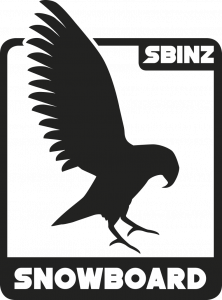Snowboards first began appearing in the 1960s. Since then they have progressed through many eras and had many influences. The basic makeup of a snowboard includes the nose and tail, base and top-sheet, waist and side-cut, edges, and the inserts where the bindings go.
There are many different measurements that apply to snowboards, helping to give each snowboard different riding characteristics. It should be noted that new technology and concepts are continually coming into the marketplace, some will be around forever, while others are fads or become outdated and will disappear.
Snowboard Boots & Bindings
Snowboard Boots
For boots to fit well, toes must feel snug against the front of the boot and the heel should fit snug in the back of the boot. The foot should have little movement within the boot. That said, the toes should not be curling up inside the boot.
After boot fit, comes support. This is dependent on the individual’s riding style. Someone who rides a lot of park will generally have a softer boot for forgiveness, compared to someone who rides a lot of off-piste terrain who may want a stiffer boot for better response. Stiffer boots will also be useful for those riders who carry a little more body weight with them.
Remember the boots are the first contact of the body to the gear; well-fitting boots make a massive difference in how effectively and efficiently we ride.
Lacing Systems
These days there are a number of different lacing systems available, such as BOA, zone lacing, or just standard laces. This is a personal choice and relative to comfort and longevity more than anything. Riders and instructors who spend 100 plus days a year on snow, should consider how strong a lacing system is before purchasing. It is also important to make sure there is very little room between the shin and the tongue of the boot. This can be adjusted by tightening the laces of the inner liner.

Snowboard Bindings
Think of bindings as being the interface between the boots and the snowboard. Much like boots, well-fitting bindings are key to a good setup.
Strap Bindings
The foot is held onto the snowboard with two buckle straps; one strapped across the top of the toe area and one across the ankle area. They can be ratcheted closed for a tight fit and good rider control of the snowboard. Straps are typically padded to evenly distribute pressure across the foot. Cap straps are the industry standard for most bindings nowadays, providing a snug and tight fit to the toe of the boot. Numerous companies have adopted various versions of the cap strap.
Step-In / Step-On Bindings
Burton Snowboards recently resurrected the step-in system from a deep grave, catering to riders who value convenience but still seek reasonable performance. The revamped system has the boot clicking into a mechanism that is part of the binding base plate and highback, allowing quick in and out access. Historical versions of step-in bindings, popular in the 90s and early 00s, were trickier to engage due to snow getting stuck in the mechanism.
Rear-Entry Bindings
With rear-entry bindings (e.g. Flow Bindings), the highback folds back and the ankle strap lifts up, allowing the system to open so the foot can be placed in the binding. This is a binding that seeks to combine the convenience of step-in systems with the control levels attainable with strap-ins; however, these are generally viewed as providing less response when compared to alternatives.


